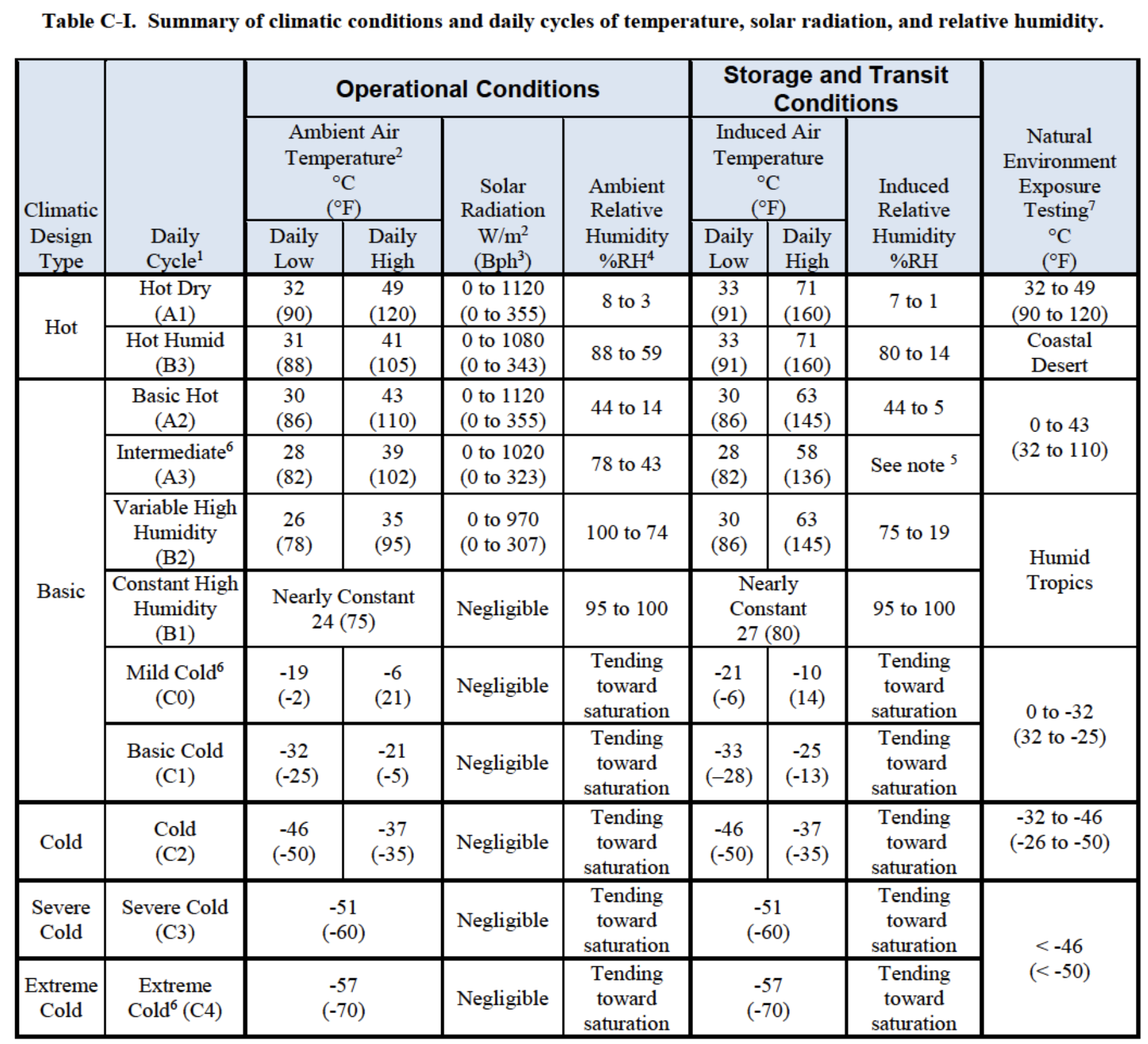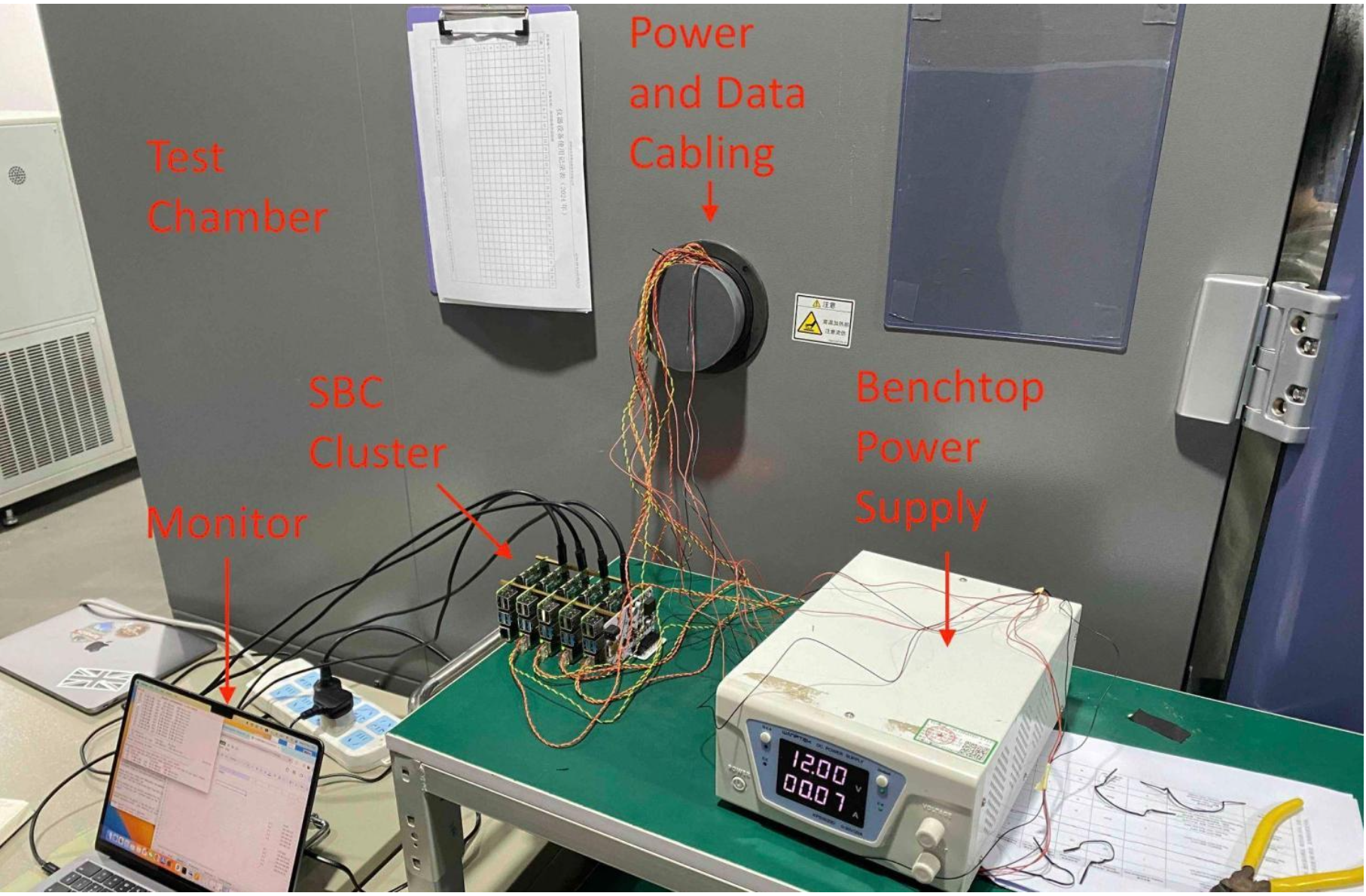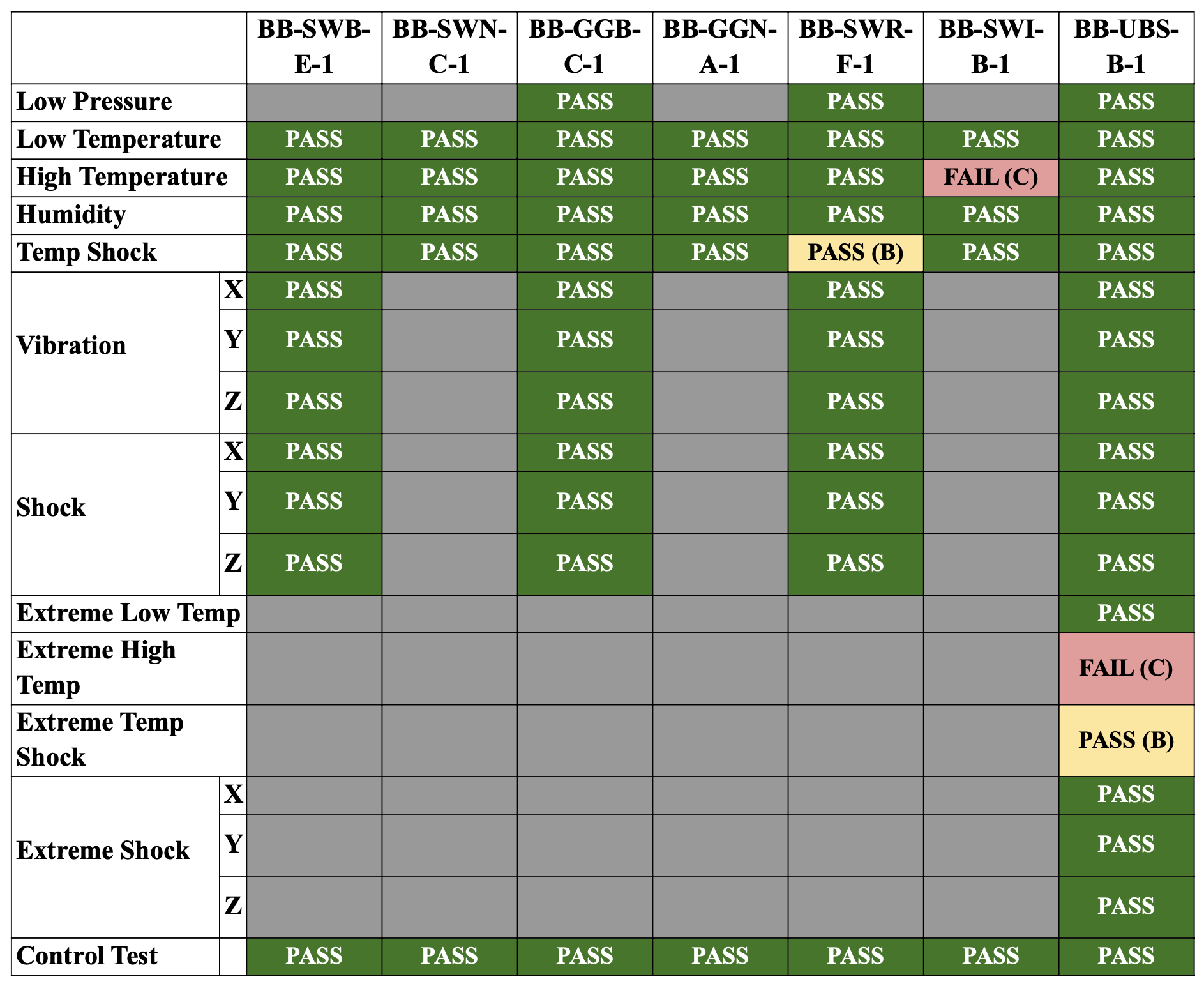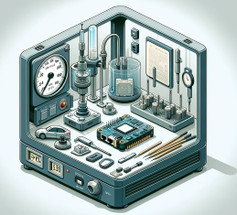Posted by Josh Elijah on 5th Apr 2024
MIL-STD-810H Compliance Testing for BotBlox Hardware: Ensuring Reliability in Extreme Conditions
Introduction: Why It Matters
At BotBlox, our goal has always been to engineer networking hardware that not only meets but exceeds the demands of mobile robotics. From drones flying at high altitude to underwater ROVs exploring ocean depths, our products are at the heart of innovations that face harsh environmental challenges. Despite our confidence in the ruggedness of our designs, validated by thousands of hours in the field -from SwitchBlox Rugged's integration into ice drill cameras to GigaBlox Rugged's role in high-altitude wildfire mapping - we recognized a gap. Without a structured testing methodology, how could we quantify, and thus truly guarantee, the resilience of our hardware?
What is MIL-STD-810H?
MIL-STD-810H is a military standard that specifies test methods for qualifying hardware against various environmental conditions. It encompasses 29 environmental tests ranging from high temperature to pyroshock. While originally designed for military hardware, MIL-STD-810H has become a gold standard for any hardware that is expected to be subject to harsh environments, and so is an excellent choice for BotBlox hardware.
It’s worth noting that while MIL-STD-810H specifies test methodologies, it doesn’t actually outline specific test values. For example, it will tell you how to run a temperature test, but not the actual temperature value or dwell time to use. This means the engineer needs to determine these values, and this depends on the type of application the hardware is being used in. Designing a set of tests takes real knowledge of not just the application, but how and why the hardware may fail. The table below is taken from MIL-STD-810H, and shows the kind of guidance the standard provides with respect to environmental temperature (amongst other things).

How did we select these tests?
BotBlox products are typically bare boards or modules that end up being embedded into drones, industrial robots and underwater rovers. With this in mind, not all tests outlined in MIL-STD-810H are applicable. For example it’s far more likely our boards will be used in the thin air at high altitude, than being subject to direct sunlight for long periods of time. With this in mind, we selected 7 of the 29 MIL-STD-810H tests that were most appropriate.
The Tests
MIL-STD-810H - Paragraph 500.6 - Low Pressure (Altitude)
At high altitude, air pressure is significantly reduced compared with sea level. There are two main failure modes for electronics.
- Outgassing: Gasses trapped inside components that have voids can escape, often damaging the component in the process.
- Reduced thermal dissipation: Reduced air density reduces convection as a means of thermal dissipation, meaning components more easily overheat.
The tests we undertook involved a steady state low pressure test and a rapid decompression event. We selected a pressure of 30,000 feet for the steady state test as it is around cruising altitude, while we selected pressures of 40,000 and 8,000 feet for the decompression test.
MIL-STD-810H - Paragraph 501.7 - High Temperature
High temperature causes a number of detrimental effects, including…
- Component value drift causes circuits to operate differently at high temperatures.
- Increased noise floor in transducers, causing bit errors.
- Thermal overload on semiconductors can trigger thermal cutoff or failure
- Mechanical expansion of a PCB, causing mechanical failure.
MIL-STD-810H - Paragraph 502.7 - Low Temperature
Electronic components dissipate power and thus are naturally self heating, so low temperature is typically less demanding on electronics than high temperature. However low temperature can cause component value drift and mechanical contraction, causing stresses and microfractures on a PCB.
MIL-STD-810H - Paragraph 503.7 - Temperature Shock
Understanding the effects of rapid temperature changes gives a very good indication of system durability and sensitivity to temperature.
MIL-STD-810H - Paragraph 507.6 - Humidity
Unless electronics are hermetically sealed from an environment, it is likely that it will be exposed to relative humidities exceeding 95% when used in a real-world application. This can cause moisture to enter electronic components or result in condensation on a board, both of which can degrade performance or cause electronics to catastrophically fail.
MIL-STD-810H - Paragraph 514.8 - Vibration
Vibration can be caused by wheeled locomotion for ground vehicles and propellers in air vehicles. In electronics, vibration can cause a number of detrimental effects such as…
- Larger components can become dislodged from a PCB.
- Piezo-electric devices such as crystal oscillators can convert vibration into voltage, thus causing noise on clock frequencies.
- Non locking connectors can be shaken loose over time
Vibration is typically expressed in terms of acceleration force (g), displacement and frequency, all of which need to be selected based on the application. In our case, we chose a frequency range that represents typical frequencies seen on ground and air based platforms. For full test coverage, it is important that vibration is also tested in all three axes.
MIL-STD-810H - Paragraph 516.8 - Mechanical Shock
The detrimental effects of mechanical shock are similar to vibration, though mechanical shock is more transient and involves greater acceleration forces(g). Think of the effect of a drone crashing, or a sudden change in motion. Mechanical shock can induce more specific effects into electronics that would not be present under a vibration test. In our case we selected a very large acceleration of 90g for 6ms in a zig-zag impulse shape to challenge the ruggedness of our boards.
How did we run the tests?
There are two modes used for testing hardware, storage tests and operational tests. A storage test is where the hardware is subject to environmental conditions while powered off, meant to simulate how well the hardware can withstand harsh conditions while being transported or stored. This is in contrast to operational tests, where the hardware is powered on and typically operating as normal while environmental tests are being done.
For our customers, knowing the limits to which our hardware can continue to operate is far more useful than knowing the absolute maximum limits the hardware can withstand while powered off. For this reason, we ran all our tests with the hardware powered on and performing full data rate networking. The image below shows the general setup followed in our tests.

In this setup each device under test (DUT) was placed into the chamber and powered from an external benchtop power supply. Then, two ethernet ports on each device were connected to a Raspberry Pi outside the chamber, and an iPerf test was run to perform full TCP/IP network bandwidth tests while the DUTs were subject to environmental conditions. The images below show how this actually looks, both inside and outside the test chamber.
Outside the test chamber

Inside the test chamber

Testing our hardware like this was intensive to setup and monitor because of the amount of cabling involved and the number of simultaneous tests being run, but we felt this was the only way to get meaningful performance data. The data from testing like this allows us not just to monitor whether a device stays powered on, but also that it continues to pass network traffic, at the maximum possible bandwidth.
We devised four levels of test outcome to better capture performance of our hardware.
- Level A (Full Pass): Average data transmission is stable at 75% or above of nominal port speed for the entirety of the test, and there is no data interruption or loss of link
- Level B (Marginal Pass): Level B (Marginal Pass): There is a data interruption or loss of link at any point during the test but the board recovers without intervention
- Level C (Marginal Fail): There is a data interruption or loss of link that requires human intervention (such as a power cycle) to recover
- Level D (Critical Fail): The board is damaged and does not work
We decided to use different test limits for the type of board under test. For example, we used a wider temperature range for our Rugged Series boards than for our Standard Series of boards. To see the specific values we used, please get in touch to access our full test report.
What were the results?
The table below shows the boards that were tested and the result of each test.

There are a few points to discuss.
- BB-SWI-B-1 was tested to the same high temperature as our rugged hardware (110°C), which took the silicon outside of its stated maximum temperature of 85°C. However it was later tested successfully at 85°C however this was done so informally and thus did not make it into this test.
- BB-SWR-F-1 temporarily lost a link during the temperature shock test. This only happened once despite multiple test cycles.
- Only BB-UBS-B-1 was subject to extreme low temperature test of 70°C, which it passed.
- Only BB-UBS-B-1 was subject to extreme high temperature test of 150°C. The board failed at 140°C and recovered at 135°C. This is to be expected, as 150°C is an exceedingly high temperature.
- Only BB-UBS-B-1 was subject to extreme temperature shock test of -70°C to 150°C in 3 seconds, in which the link was lost but later recovered. Again, this is to be expected given the hugely wide temperature range.
For full test results, please get in touch to access our full test report.
What This Means for You
The following boards were tested:
GigaBlox Nano - BB-GGN-A-1 (and BB-GNP-A-1)
SwitchBlox Rugged - BB-SWR-F-1
SwitchBlox Industrial - BB-SWI-B-1
UbiSwitch - BB-UBS-B-1 (and BB-UD1-A-1)
What This Means for You
The fact that our hardware is now MIL-STD-810H means our customers can integrate our hardware with the confidence that it will not fail under harsh conditions. This testing demonstrates our commitment to providing the most rugged and compact networking hardware optimized for drones and robotics.
How do I get the test results?
Curious about how our tested and trusted hardware can support your next project? The full test report is not public, so get in touch if you're interested in receiving a full copy of the results.

